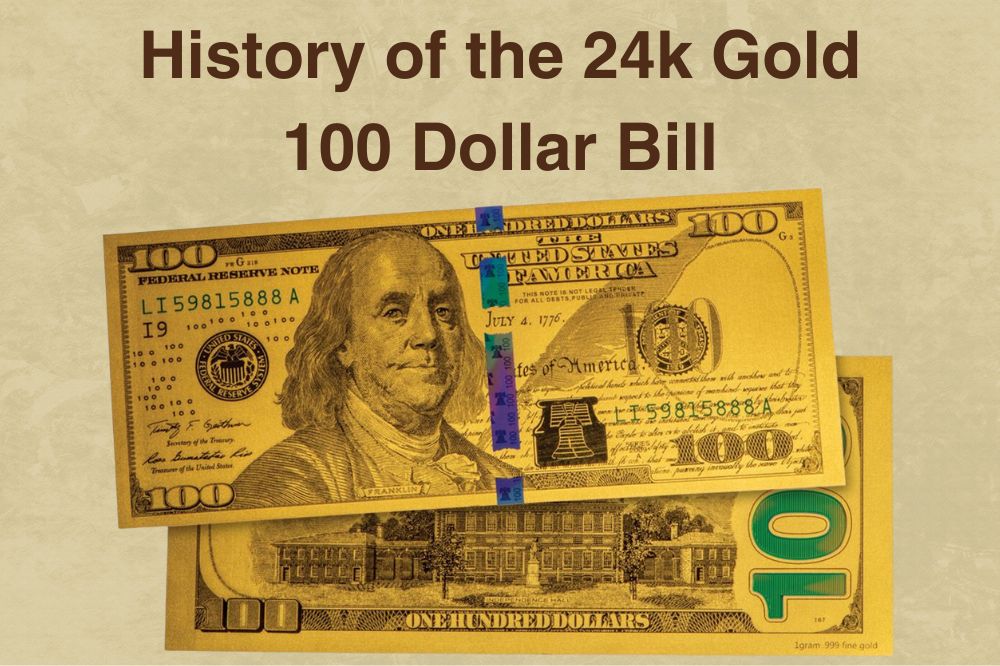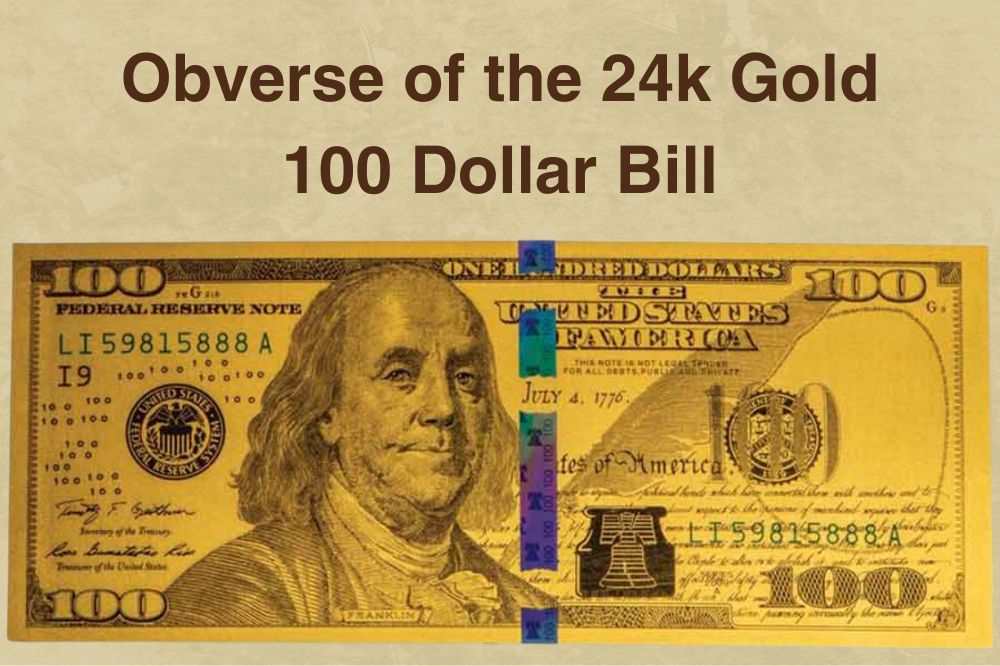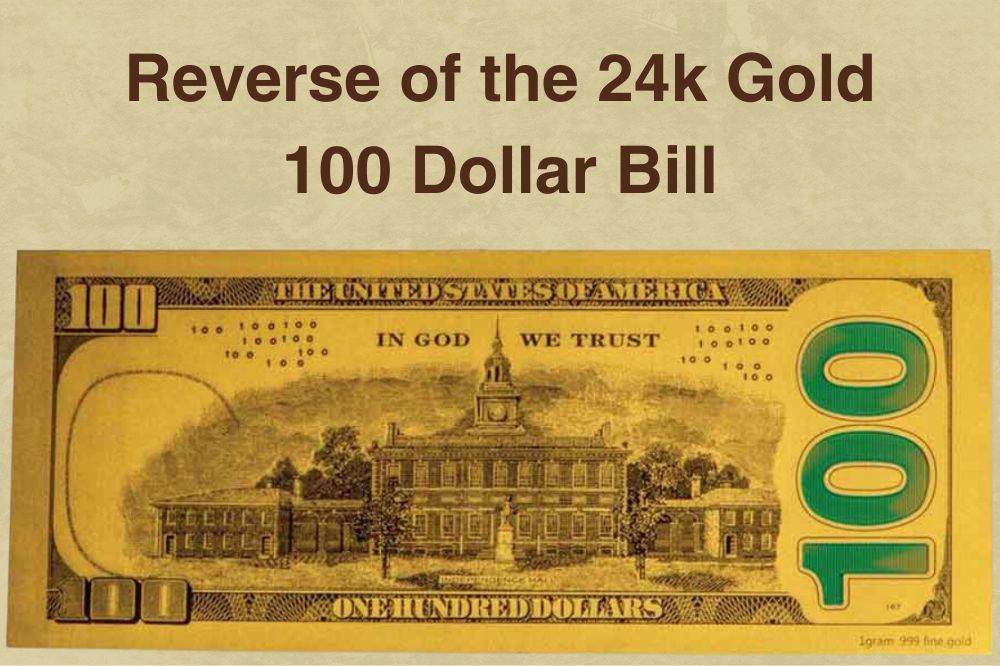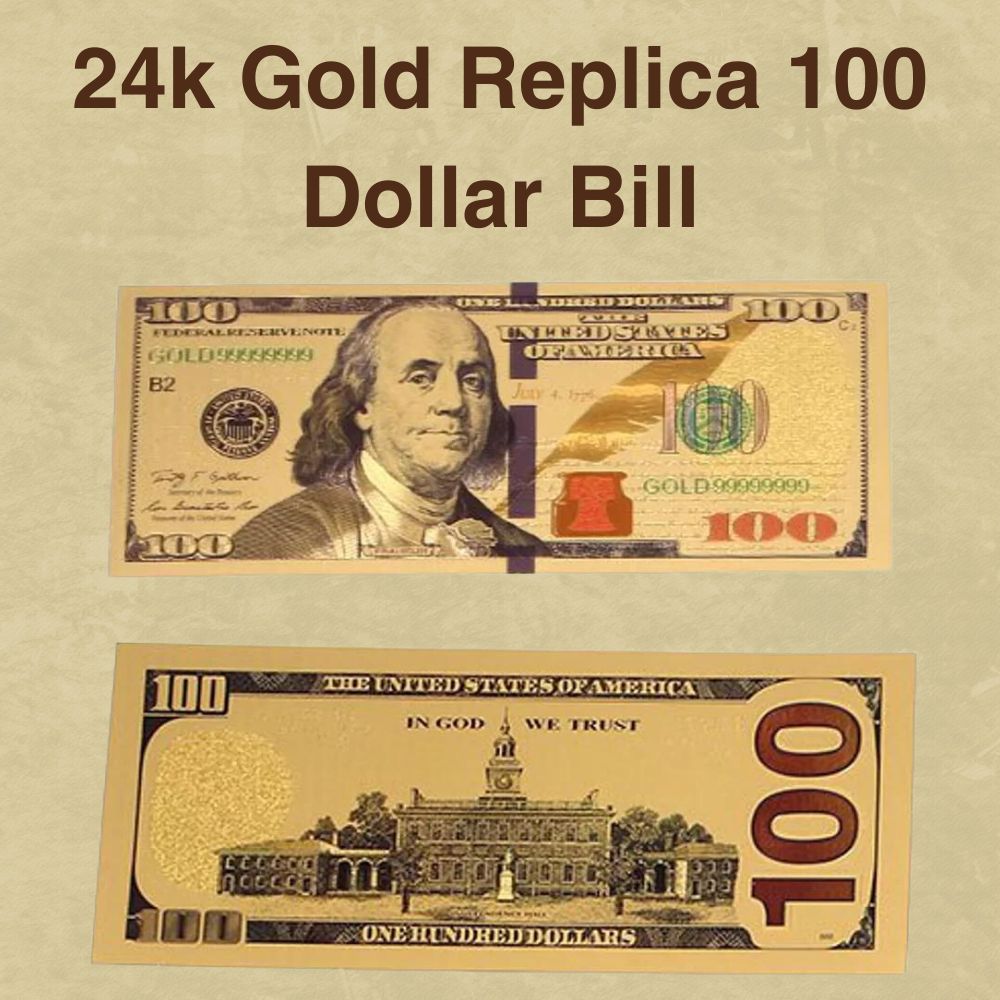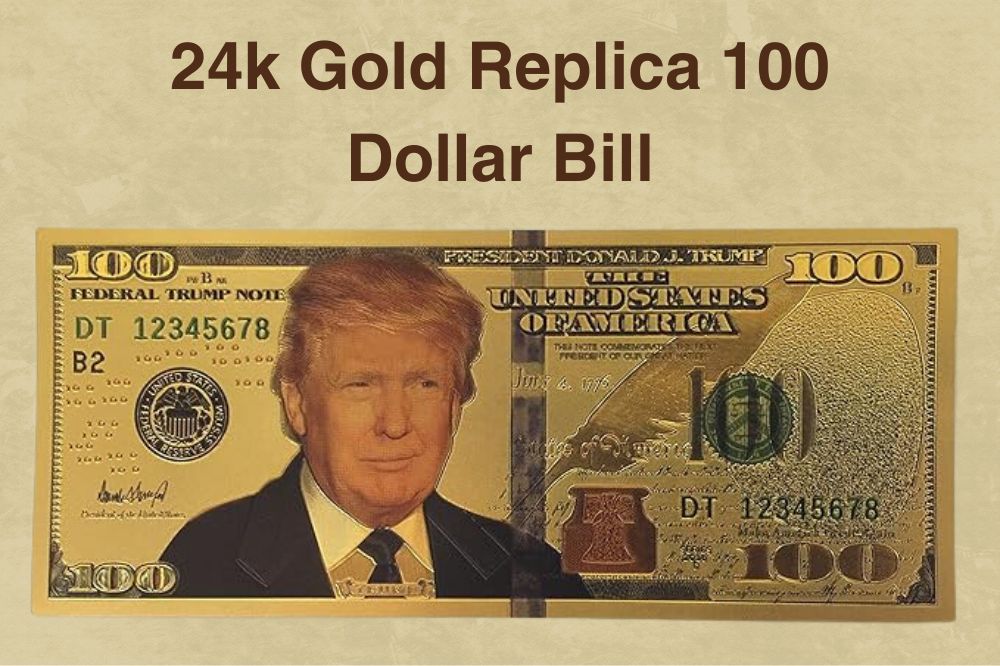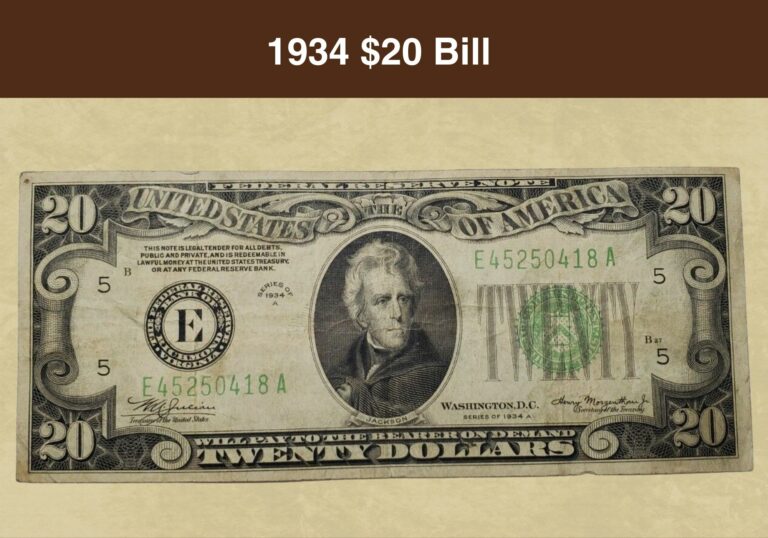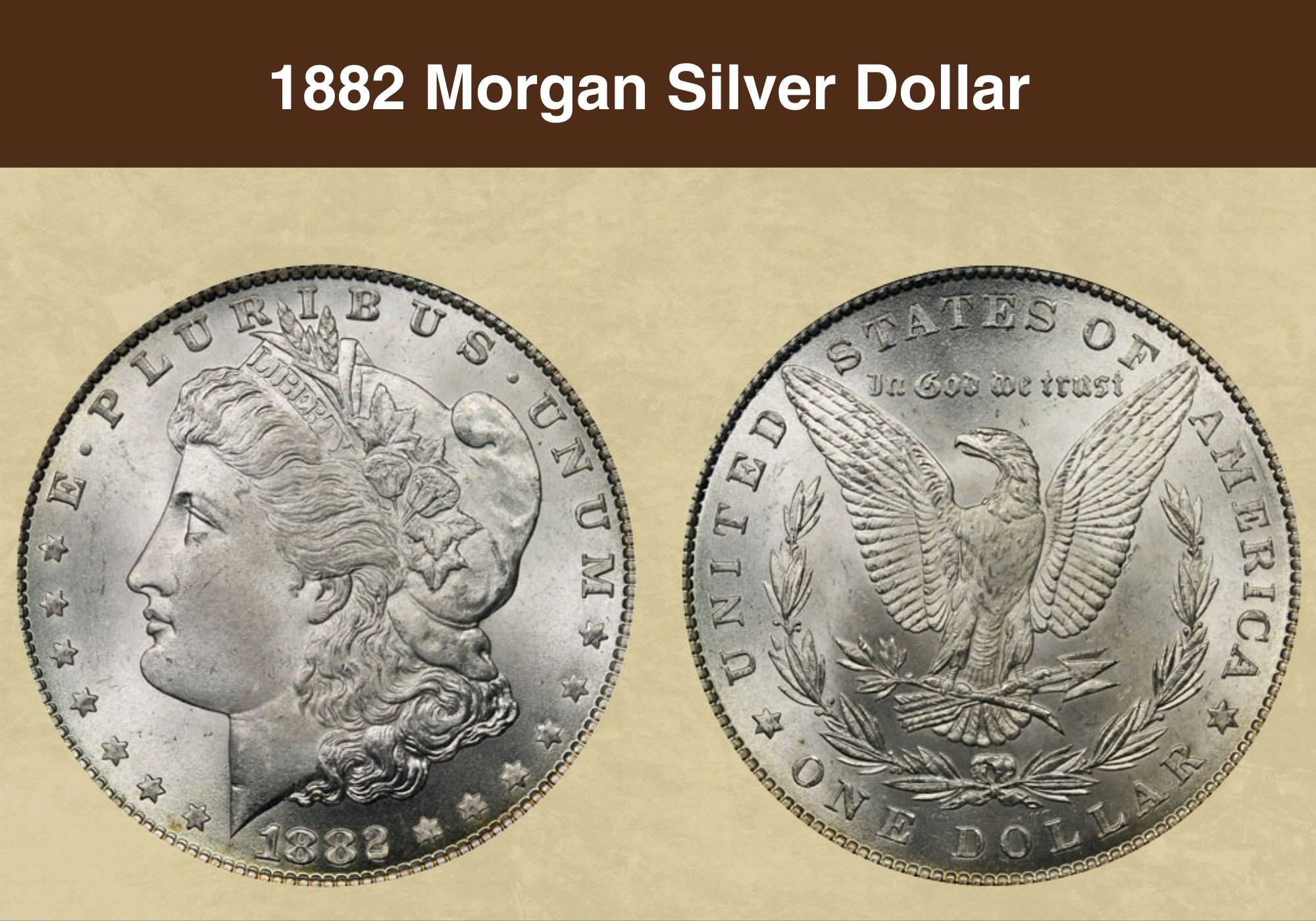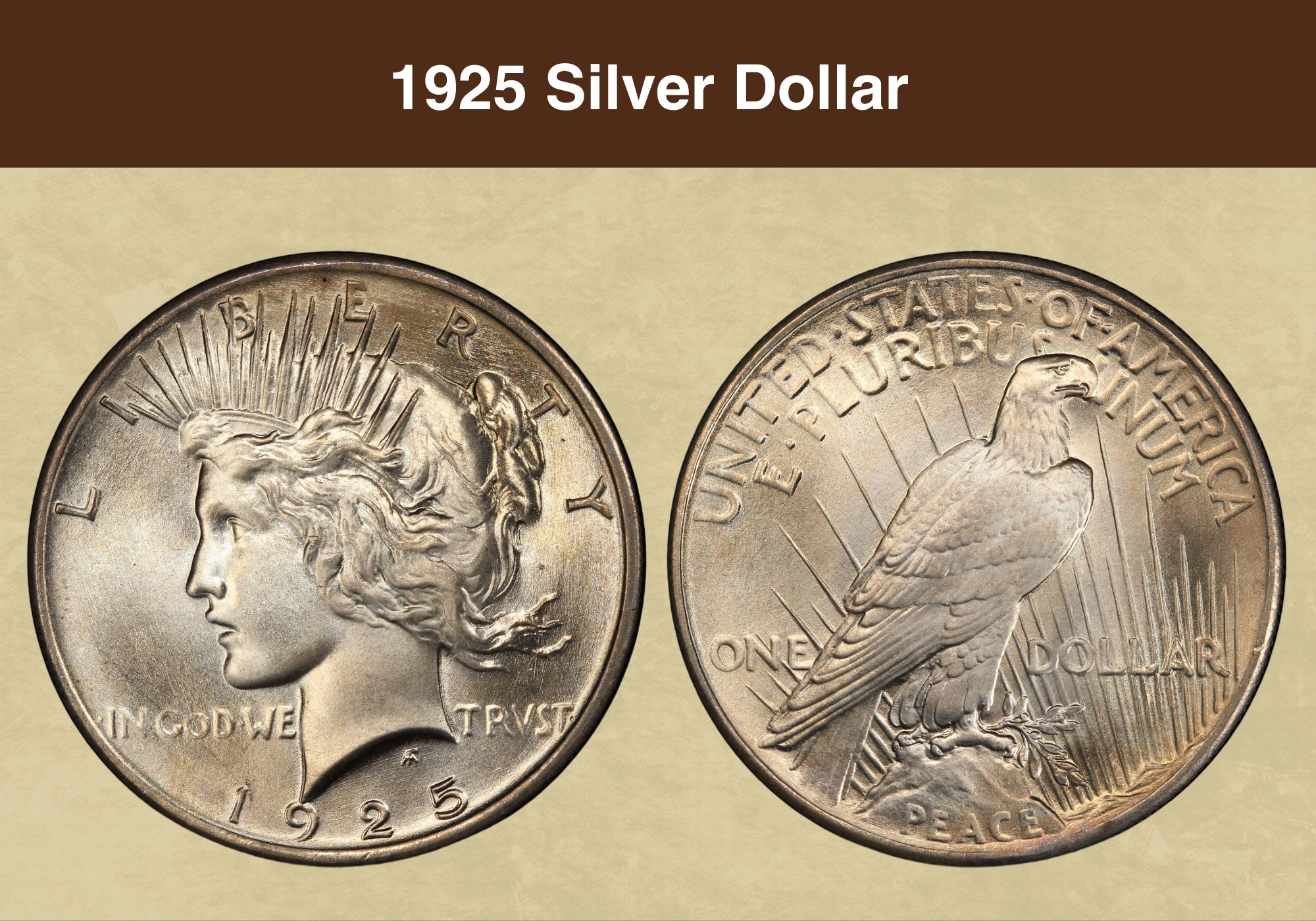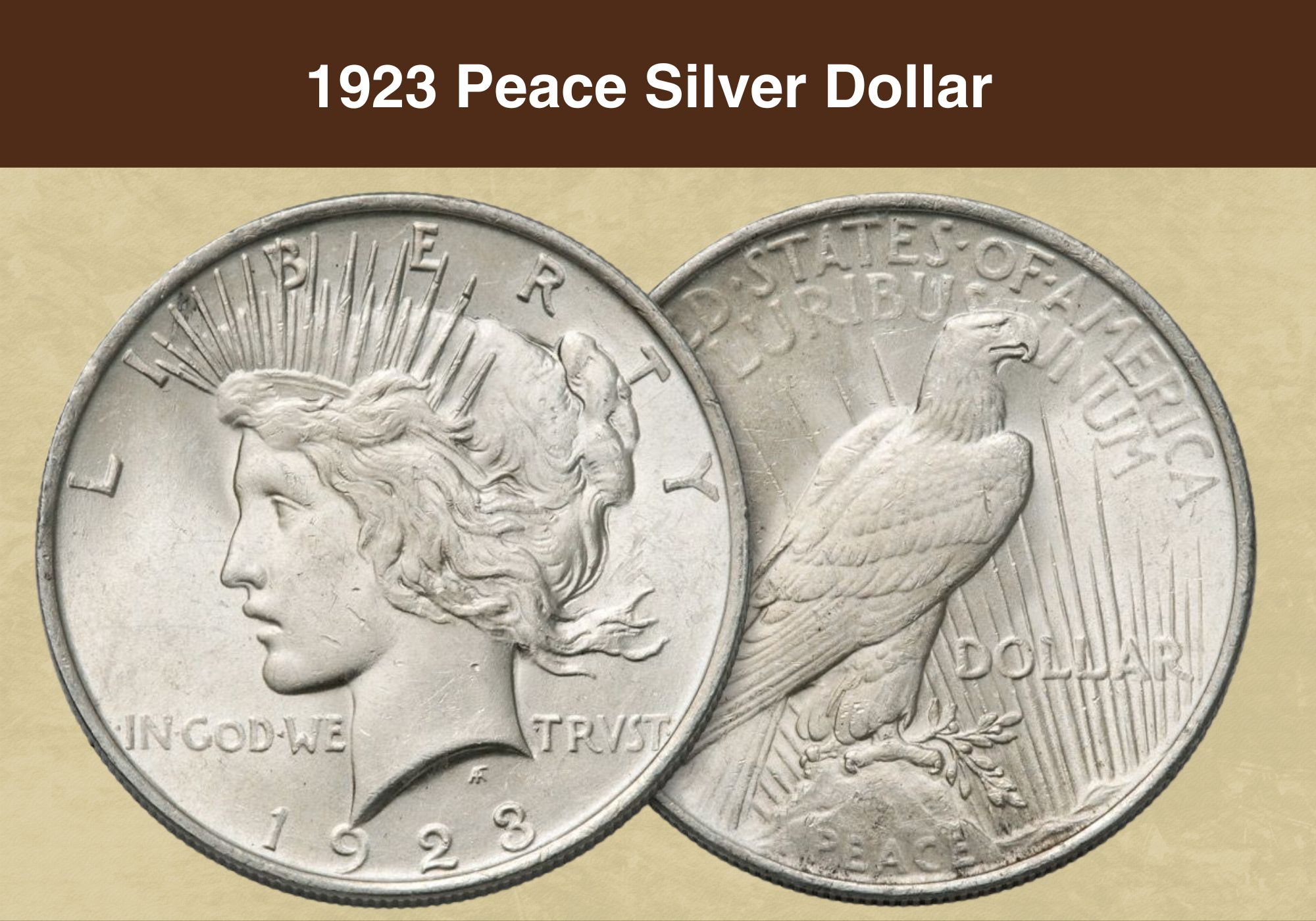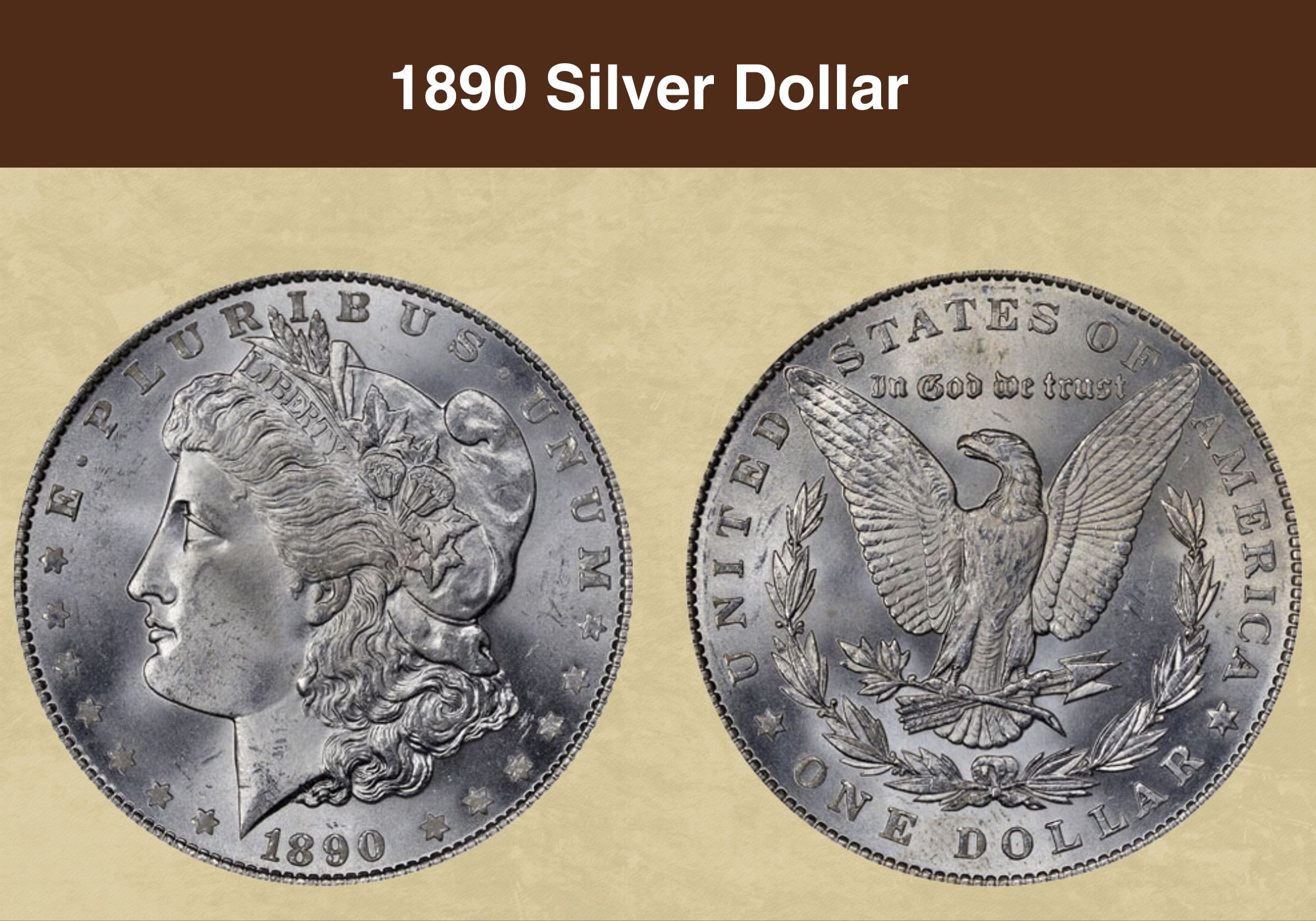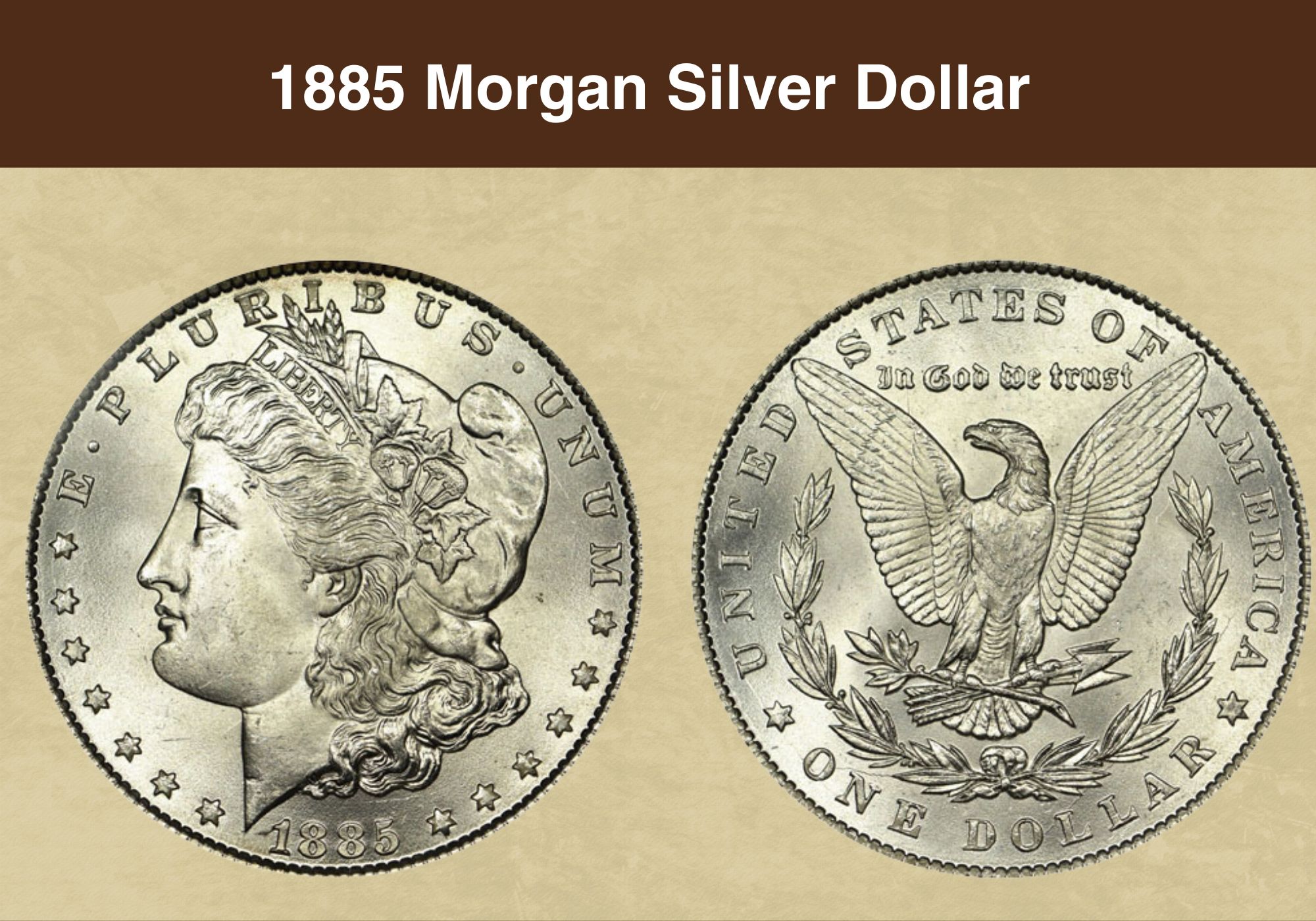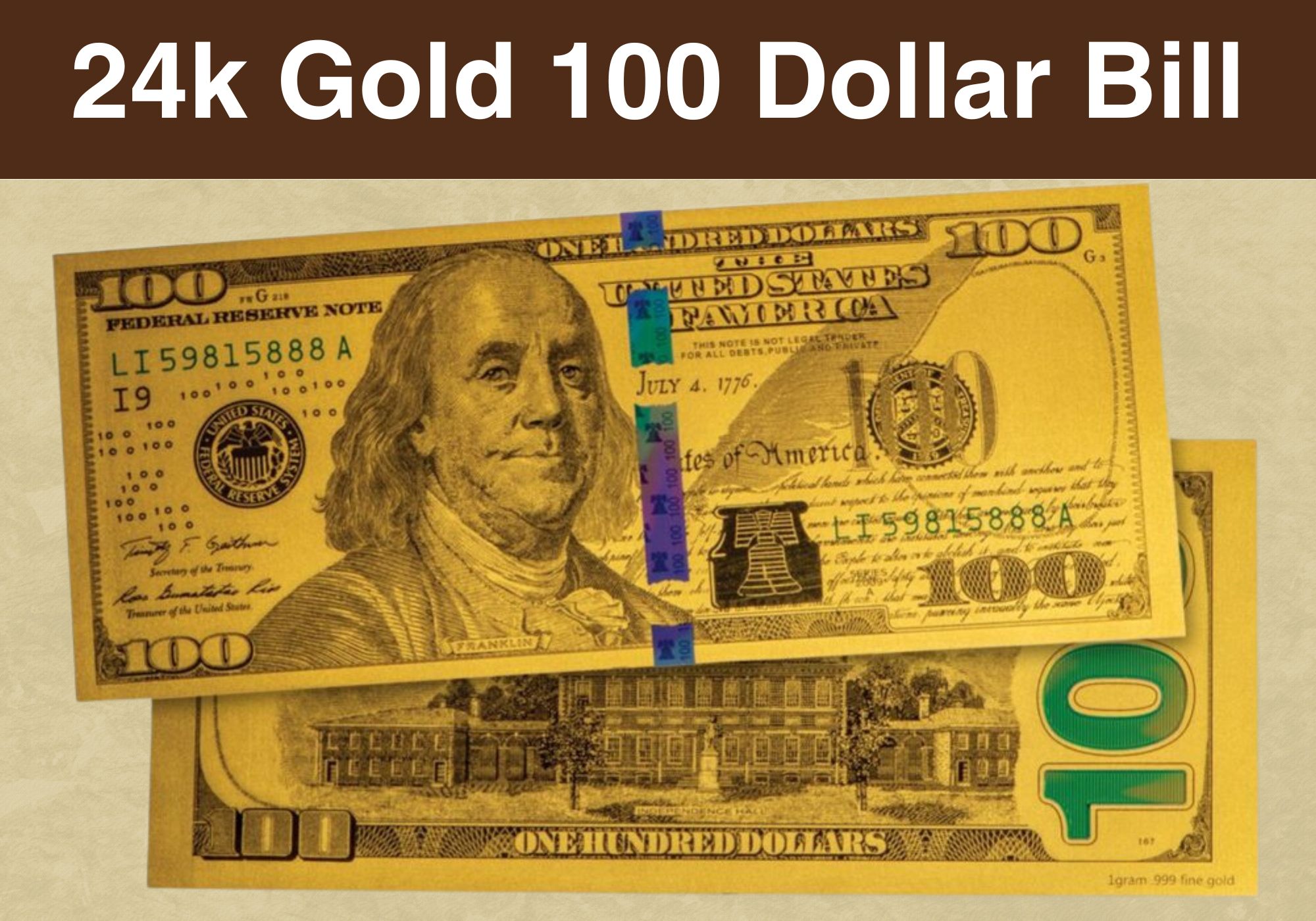
Coin Value Contents Table
A one hundred dollar bill made of pure gold is a pretty exciting thing! But is it as valuable as you’d expect? That’s what we’re here to find out!
We’re going to investigate the 24k gold 100 dollar bill value. We’ll learn about its history and design. And we’ll discover some of the different types that are out there.
Ready to learn more about this slice of pure gold? Then read on!
24k Gold 100 Dollar Bill Value Chart |
|
| Type | Uncirculated |
| 24k Gold Replica 100 Dollar Bill Value | $3-$5 |
| 24k Gold Trump 100 Dollar Bill Value | $3-$17 |
History of the 24k Gold 100 Dollar Bill
The 24k gold 100 dollar bill is a novelty item, rather than legal tender. It’s readily available online, and most versions replicate the real 100 dollar bill, which features Benjamin Franklin.
The very first 100 dollar bill was a United States Note, also known as a Legal Tender Note. It was issued in 1862.
These days, the 100 dollar bill is the largest denomination of any US bank note. But that wasn’t always the case. Until 1969, bank notes existed with denominations of $500, $1,000, $5,000 and even $10,000.
The 24k gold versions replicate the 100 dollar Federal Reserve Note. That was first issued in 1914. The obverse features a portrait of the Founding Father, Benjamin Franklin. It’s that image which gives 100 dollar bills their nicknames of “Franklins”, “Benjamins”, or “Bens”.
Also on the obverse of the bill is an image of the Liberty Bell, which sits inside the outline of a stylized Syng inkwell. That’s the silver inkwell that was used in the signing of the Declaration of Independence. A large quill pen appears too.
1929 saw greater standardization of the design. From then on, every 100 dollar bill would have the same portrait of Franklin, the same border on the obverse, and the same image on the reverse – Independence Hall.
1929 also saw the 100 dollar bill issued in two different forms – as a Federal Reserve Note and as a Gold Certificate. The former had a green Treasury seal and serial numbers, while on the latter both seal and serial numbers were gold.
In 1966, the first and only one hundred dollar bills of the type known as United States Notes were produced. For the first time, these featured the wording on the Treasury seal in English instead of Latin. And the serial numbers and seal were red.
It wasn’t until 1990 that modern anti-fraud measures were incorporated in the 100 dollar bill. These consisted of microscopic printing around the portrait of Franklin and a metallic strip on the left-hand side.
As computer printing and scanning improved, the race against forgery intensified. More measures were introduced six years later, with the addition of a watermark of Franklin, and ink that changed color in the light.
Franklin’s portrait was adjusted and made larger too. And fine lines were printed around it, and around the image of Independence Hall.
The newest series of 100 dollar bills was instituted in 2010. But problems with production meant that the first of those notes wasn’t actually issued for another three years.
It was this note that saw the addition of the features that are replicated on most 24k gold 100 bills. These include the Syng inkwell and the large quill pen.
Today it’s estimated that around three quarters of all 100 bills are outside the United States. The dollar is seen as a safe currency for savings or large transactions.
The gold versions, though, are purely for fun.
Also read: 12 Most Valuable One-Dollar Coin Worth Money
Features of the 24k Gold 100 Dollar Bill
The Obverse of the 24k Gold 100 Dollar Bill
The obverse of most 24k gold 100 dollar bills is modelled on the real 100 dollar bill. And it’s this side that gives those notes their nickname of Benjamins or Franklins. It depicts a portrait of Benjamin Franklin that was painted in the 1780s by an artist called Joseph Siffred Duplessis.
At that time, Franklin was probably the most famous US citizen on the planet. He was living in Paris, representing the interests of the revolutionary US government to the French court. Duplessis was the court painter, and several admirers of Franklin commissioned the portrait.
The image on the 100 dollar bill was refined over the years, with changes made partly to prevent fraud. The most recent version was used in the 2010 series, and it’s the one that’s used on the replica 24k gold 100 dollar bills.
While the portrait of Franklin is the most striking feature of the obverse, several other images are shown too. There’s a large quill pen to his right, and below that the outline of an inkwell – both references to the signing of the American Declaration of Independence.
The Liberty Bell appears inside the inkwell, while the denomination “100” appears in all four corners and superimposed over the green Treasury seal.
As these aren’t real bank notes, there are no serial numbers. Instead, “GOLD 999999” is printed where the serial numbers would appear.
It is possible to find another version of the 24k gold 100 dollar bill with a different design. A design featuring a full color portrait of Donald Trump has been produced too, aimed at those who don’t want a true replica.
This version also takes a different approach to the serial numbers, using “DT 12345678”.
The Reverse of the 24k Gold 100 Dollar Bill
Most 24k gold 100 dollar bills replicate the real thing. That means the reverse carries an image of Independence Hall, with a legend below it identifying the building.
Independence Hall is in Philadelphia, and it was where both the American Constitution and the Declaration of Independence were debated and adopted.
It also played a historic role in more recent times. In 1915, a convention chaired by President William Taft announced the formation of the League to Enforce Peace. This later became the United Nations.
The motto “IN GOD WE TRUST” appears to either side of the building’s central bell tower. Above that, on the border of the note, are the words “THE UNITED STATES OF AMERICA”.
The number “100” is printed at the top and bottom on the left of the note. And on the right, it appears once, printed vertically from the bottom to the top. The denomination is written in full as “ONE HUNDRED DOLLARS” on the lower border.
The figure 100 also appears several times to the top left and top right of the reverse. The printing is small, with the figures written at different angles, with irregular gaps between them to deter forgery.
The key difference between the reverse of real 100 dollar bills and most replica gold versions appears at the very bottom of the replicas. There, below the lower border, the legend “24K GOLD” is printed.
The Trump variant isn’t produced to the same standard, and the small “100”s are missing from the top corners. This version also replaces the denomination on the lower border with the words “PRESIDENT DONALD J. TRUMP”.
Other Features of the 24k Gold 100 Dollar Bill
Because the 24k gold 100 dollar bill isn’t real money, it lacks some of the features of standard bank notes.
In particular, there are no serial numbers. These are a unique way of identifying a particular bank note. And if a note is damaged during production, it’s replaced with a new one with the same serial number and a star. These are known as “starred notes”.
Because these kinds of production problems are relatively rare, starred notes are often collectible. But you won’t find any of them amongst 24k gold 100 dollar bills.
Some collectors of bank notes also focus on interesting serial numbers – numbers with consecutive or repeating digits. But because there are no real serial numbers on gold 100 dollar bills, this isn’t possible.
All this means that, while the 24k gold 100 dollar bill is a great novelty, it’s not a target for serious bank note collectors.
Also read: 14 Most Valuable Coins In Circulation
24k Gold 100 Dollar Bill Value Guides
24k Gold Replica 100 Dollar Bill Value
The 24k gold replica 100 dollar bill features 24k gold leaf on parts of the design. But that doesn’t mean it’s valuable.
That’s because the amount of gold used for each note is tiny, so it has limited intrinsic value. And the factors that make some bank notes rare and collectable don’t apply to replica notes.
For a bank note to be of interest to collectors, it has to have something about it that’s rare and interesting. That might be an error in printing, a very short production run, or an interesting serial number. Or it could be in exceptional condition.
Some collectors specialize in particular features. “Ladder” serial numbers, for example, are those where the serial number has consecutive digits, like 12345678. And “reverse ladders” are similar, but have the digits declining – like 87654321.
But replica notes are produced on a production line. They don’t have a unique serial number. And because the production process is so much simpler than for real bank notes, it isn’t possible for there to be one-off errors.
They’re produced in large quantities too. People often buy them as fun gifts, or to give out as party favors. So there’s no rarity value.
And replica notes can’t be used to buy goods, so they don’t usually get carried around in people’s wallets. Brand new ones are being produced all the time, and they’re exactly the same as the ones already out there. So there’s no premium in value for a note in excellent condition.
All this means that novelty 24k gold 100 bills aren’t valuable. You can pick one up for a few dollars – just check out online retailers. Some sell them in sets alongside other 24k gold bills in different denominations.
But watch out for unscrupulous sellers! It is possible to find the exact same product being offered for sale at vastly inflated prices. Those sellers are hoping that the words “24k gold” will bamboozle unwary buyers into paying far more than the notes are worth.
24k Gold Trump 100 Dollar Bill Value
The 45th US President is known for his flamboyant lifestyle and hubris. So it’s perhaps not surprising that an alternate version of the 24k gold 100 dollar bill has been produced with his image.
Like the replica bills, this uses small quantities of gold leaf as embellishment. And in this case too, the amount of gold used is so small as to have very limited value.
None of the features that make real bank notes collectable apply here. Notes in top condition are easy to find, because they can’t be used to buy things so aren’t carried around. There are no unique serial numbers. And the simple production process means there aren’t one-off error notes either.
The Trump bank note does, however, feature a “ladder” serial number – DT 12345678. So at a push, a collector specializing in serial numbers might be prepared to spend a few dollars to add it to their collection. But because all the Trump 100 dollar bills have this, it’s not rare or valuable.
You can pick up one of these notes for about $3 or $4. But crooked retailers will try to con people into paying far more than they’re worth. At the time of writing, one retailer was trying to sell Trump 100 dollar bills for $999.95 apiece! Buyer beware.
Also read: Top 10 Most Valuable Morgan Silver Dollar Worth Money
24k Gold 100 Dollar Bill Errors
With real bank notes, errors during production can create rare and collectable bills. It’s possible to find notes where the reverse is printed upside down, where printing is partial or obstructed, or even where serial numbers are missing.
This YouTube video from 4 Kollector looks at a huge range of bank note error types.
With 24k gold 100 dollar bills, however, these errors aren’t possible. That’s because the production process is much more straightforward, and no part of a bill is unique.
FAQs
How much gold is in a 24k gold 100 dollar bill?
Very little! Although the gold used is pure – 24 karat means it doesn’t contain any other metals – it’s in the form of gold foil (also known as gold leaf). That’s a very thin and light layer of gold. It’s so light that you wouldn’t be able to weigh it using a standard pair of scales.
What is a 24k gold 100 dollar bill worth?
No more than $5. There are fewer of the Trump versions out there, so some people might be prepared to pay more for one of those.
The low value is because the gold content is so small, and because these dollar bills are mass produced.
Unlike real bank notes, they don’t have any unique features like serial numbers or errors. And because they were never intended for circulation, there’s no premium for a note in excellent condition either.

